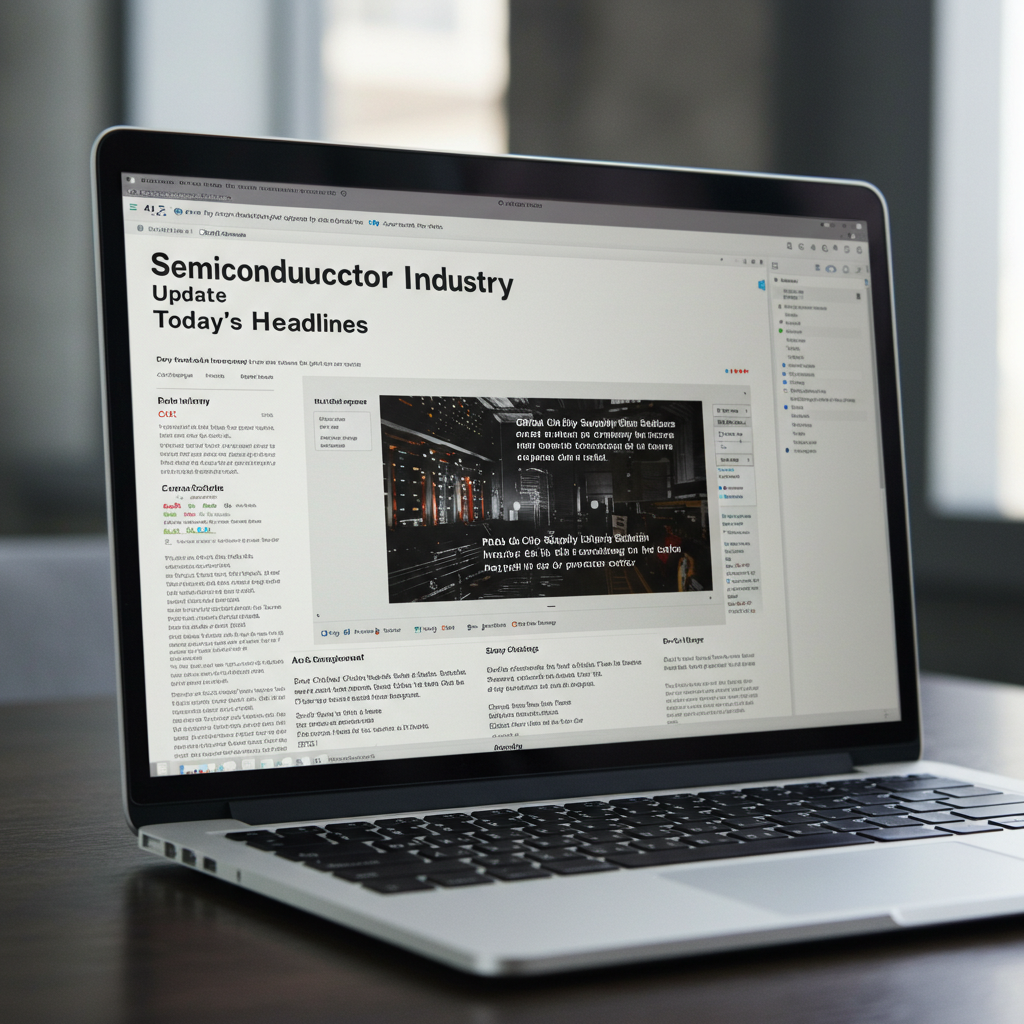In October 2025, the technology industry experienced massive market volatility with demand for AI at its core. Particularly in the semiconductor sector, we are simultaneously witnessing huge AI infrastructure investment plans led by OpenAI, price spikes in the memory market, and geopolitical conflicts that are shaking up the supply chain. This article takes a deep dive into the Top 10 most important news stories revealed in this dynamic environment and predicts the future of tech trends.
AI Infrastructure Wars: Unprecedented “Gigawatt-class” Partnerships
The evolution of AI demands computational resources of unimaginable scale. Symbolic of this is Stargate, a massive project promoted by OpenAI.
OpenAI is diversifying its infrastructure without relying on a single supplier. Of particular note is a multi-billion dollar collaboration with AMD, which will supply Instinct GPUs, and OpenAI has also partnered with up to 6 gigawatts (GW)Broadcom, which has announced plans to deploy 10 GW of AI accelerators.
For memory, the lifeblood of GPUs, OpenAI’s demand is reshaping the market, with Samsung and SK hynix requesting up to 900,000 DRAM wafers per month for HBM (high bandwidth memory), which could account for about 40% of global DRAM production capacity. This could account for up to 40% of the global DRAM production capacity, adding to the tight supply-demand balance in the memory market.
The frenzy of AI demand has boosted NVIDIA’s value, and the company has finally surpassed the $5 trillion market cap mark. However, energy efficiency has become the new competitive axis, with reports that power consumption of AI servers has increased 100-fold in the past few years, and NVIDIA is pushing for the adoption of 800V DC power infrastructure for gigawatt-class AI.
Decisive Market Recovery: Memory Supercycle and TSMC’s Price Dominance
The rush to invest in AI is directly related to the performance of semiconductor manufacturers.
Samsung Electronics posted a strong turnaround in the third quarter with operating profit surging to 12 trillion won as its memory and foundry businesses rebounded; SK hynix posted a record quarterly profit as well; and the market saw record low inventories as a super cycle DRAM prices are trending upward by up to 30%, signaling the arrival of a supercycle.
TSMC ‘s leadership in manufacturing technology, with a dominant 71% share of the global foundry market, is expected to surpass $100 billion in full-year sales in 2025. TSMC has also decided to raise the price of advanced nodes by 5-10%, strengthening its pricing power on the back of its technological advantage.
Fierce competition over geopolitics and technological sovereignty
The struggle for technological supremacy between the U.S. and China has exposed the fragility of the supply chain.
Particularly damaging was the Dutch government’s freeze on the management rights of Nexperia, a semiconductor manufacturer with Chinese capital, which restricted exports of in-car chips supplied by Nexperia, leaving the global automotive industry, including Volkswagen and Korean automakers, at risk of production stoppages. face the risk of production stoppages. This one case demonstrates that the national securitization of technology is a tangible risk that could shake the global economy off its feet.
Meanwhile, countries are accelerating domestic production and international alliances to secure technological sovereignty.
– Japan/Rapidus Challenge: Japan’s Rapidus is challenging TSMC and Intel in 2nm process development by securing key US customers such as IBM and Tenstorrent. Fujitsu and NVIDIA also plan to jointly develop energy-saving AI chips for supercomputers and robotics by 2030.
– Intel Strengthens Foundry : Intel is strengthening its foundry business with the launch of Panther Lake, using the latest 18A process, and winning an AI accelerator order from Microsoft.
Advances in Next-Generation Technology: HBM4 and the Dawn of the AI PC
At the forefront of technological development is new hardware that improves AI performance.
In the memory area, Samsung has announced that it has begun sample shipments of HBM4, targeting a bandwidth of 3.25 TB/s, about 2.5 times higher than HBM3E. This HBM4 will define the performance of the next generation of AI computing.
In addition, with the introduction of Intel’s Panther Lake, “AI PCs” with enhanced AI capabilities are in full swing. At the same time, NVIDIA and Kioxia are jointly developing 100x faster SSDs for next-generation servers, and innovations in storage technology are underway to eliminate bottlenecks in AI infrastructure.
Finally, robotics is rapidly gaining attention as the next frontier after AI. The acquisition of the ABB robotics business by the Softbank Group for ¥800 billion and the race to develop humanoids in South Korea are clear indications that “physical AI” is the next major area of investment for Big Tech. However, it has also been pointed out that advances in AI could replace approximately 100 million jobs over the next 10 years, calling for a debate on both the light and dark sides of technological innovation.
Important News Top 10
1. OpenAI Signs Super-Large Alliance to Build AI Infrastructure
OpenAI has entered into an unprecedented scale of partnerships with several leading semiconductor companies to bring the next generation AI infrastructure “Stargate” project to fruition. In particular, we have partnered with
2. market valuation of NVIDIA: market cap surpassing $5 trillion and AI power consumption issues
At the center of the AI boom, NVIDIA has surpassed $5 trillion in market capitalization for the first time ever. This indicates extremely high demand for AI systems, including the company’s GB10 superchips and Rubin GPUs. Meanwhile, the power consumption of NVIDIA’s AI servers has increased a staggering 100-fold in the past few years, raising the question of whether the world can meet this growing AI energy demand. To meet this challenge, NVIDIA is moving toward an 800-volt DC power infrastructure to drive its gigawatt-class AI.
3. arrival of a memory market super-cycle and price spike
The DRAM and NAND markets posted a ” super cycle” of12 trillion won, up an astounding 158% from the previous quarter, as a result of AI demand and inventory suppression. sk hynix likewise posted record Q3 profits, with higher prices and AI demand driving results. SK hynix also posted a record Q3 profit, driven by rising prices and AI demand.
4. the Nexperia problem in the Netherlands: supply chain disruption due to geopolitical risks
The problems surrounding Nexperia, a Dutch semiconductor manufacturer owned by Chinese capital, are having a major impact on the international supply chain. Concerns have been expressed that the Dutch government’s seizure (freezing) of control of Nexperia will hinder exports of the company’s products and trigger plans by major global automakers such as Volkswagen (VW) and Honda to temporarily halt production. This is a serious example of how the aftermath of the U.S.-China conflict is spreading to other areas, including the auto industry.
Intel accelerates AI PC strategy with “Panther Lake” using 18A process
Intel has announced its next-generation AI PC platform, the Panther Lake architecture, and officially confirmed that it will be built on the 18A process, equivalent to 1.8nm.Panther Lake will adopt a new naming convention (Core Ultra X9/X7/X5) and will feature an AI performance and 6th generation NPUs, indicating Intel’s intention to take the lead in the AI era. Intel Foundry has also reportedly won an 18A process order from Microsoft for its “Maia 2” AI accelerator.
6. TSMC Maintains Dominant Dominance in Foundry Market, Raises Prices
TSMC still maintains a dominant 71% share of the global foundry market, leaving little room for competition. Furthermore, TSMC’s decision to raise transistor prices for advanced nodes by 5-10% suggests that the era of cheap transistors is over; TSMC is expected to surpass $100 billion in full-year sales in 2025.
7. Samsung and SK hynix intensify competition to develop next-generation HBM4
Competition between Samsung and SK hynix in high bandwidth memory ( HBM), which determines the performance of AI servers, is intensifying. The company is aiming for a bandwidth of 3.25 TB/s , about 2.5 times faster than HBM3E. In addition, Samsung has increased its market presence by securing a partnership to supply HBM3E for NVIDIA’s GB300 AI system and reportedly may also supply HBM4 for OpenAI/AMD’s MI450.
8. Japan’s Rapidus Wins Major U.S. Customer with 2nm Process
Japanese semiconductor startup Rapidus has reportedly secured major US companies such as IBM and Tenstorrent as potential customers for its 2nm process. This is a move that will accelerate competition with TSMC and Intel for the most advanced processes, and in Japan, EUV masks for Rapidus are being developed by DNP with an exceptionally short delivery time.
9. NVIDIA and Fujitsu to jointly develop AI chips
NVIDIA and Fujitsu have agreed to jointly develop AI chips for supercomputers and robotics by 2030. The collaboration aims to build a full-stack AI infrastructure by applying the technology of the Fugaku supercomputer and focusing on Japan’s strength in energy conservation.
10. alarm bells over employment replacement by AI and expansion of the robotics market
A U.S. Senate report warned that AI could replace about 100 million jobs over the next decade. Meanwhile, AI is fueling explosive growth in the robotics market, with the Softbank Group investing ¥800 billion to acquire ABB’s robotics business and entering the AI robot development race. In South Korea, “physical AI” is the next target for big tech, with KIST-LG jointly developing the Korean humanoid “Capex.


